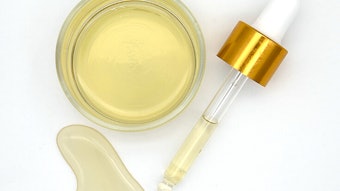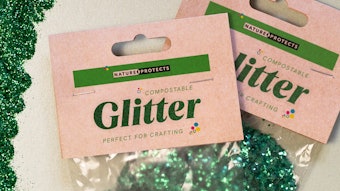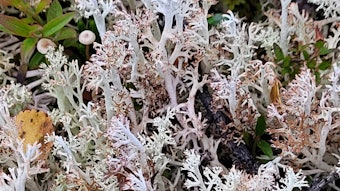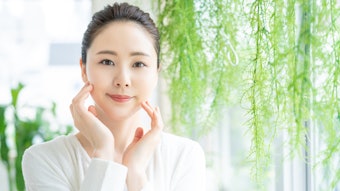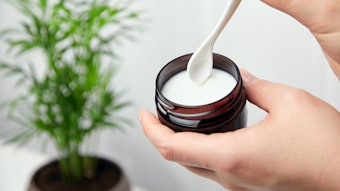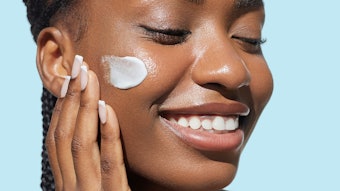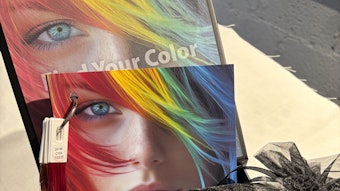Nature has always been a generous source of wellness for mankind. Since ancient times, the healing properties of various plants have represented the first medicines and cosmetics. The study of tribal and native traditions has many times laid the foundation to successfully isolate new and effective cosmetic active ingredients.
Modern functional cosmetics represent valid alternatives to dermatological treatments for preventing the signs of aging, and the plant kingdom can provide many active compounds to counteract those signs, including: skin tone and elasticity loss,1 wrinkle formation2,3 capillary fragility4 and increased skin sensitivity.5
However, natural ingredients require specific expertise not only in their research, but also in their analysis and formulation. The quality of botanical extracts, which needs to be standardized, is a crucial point for the quality of the final formulation, among others.
Standardized Extracts
To demonstrate the efficacy and reproducibility of a botanical active’s variables in a cosmetic formulation, the consistency of the natural extract is a key factor. Reproducibility is also important when considering regulatory aspects aimed to assess the toxicity and tolerability of a cosmetic ingredient.
The consistency of a botanical extract is relatively achievable when dealing with a pure product such as escin or esculin from Aesculus hippocastanum; glycyrrhetinic acid from Glycyrrhiza glabra; or with a dry extract highly purified up to the isolation of a unique class of molecules such as triterpenes from Centella asiatica, flavolignans from Silybum marianum, polyphenols from Vitis vinifera and anthocyanins from Vaccinum myrtillus.
In some cases it is convenient to purify a unique active principle up to 80–90%, whereas in other cases a complete extract of numerous different compounds may be more active than the single isolated molecules. Research in this field is complex and involves not only the identification of the active principle, it also aims to investigate the interactions between the active ingredients and other molecules present in the phytocomplex.6
Different technologies or manufacturing methods may be necessary for different types of extracts but the main parameters include: composition constancy, stability, microbe counting and the limitation of residual solvents and pesticides. These parameters should be carefully monitored as required by health authorities.
The crucial stages of the process include, as a rule of thumb, choosing the raw material first, followed by extraction and purification. While the choice of extraction solvents in the preparation of standardized extracts is an important factor for the finished product quality, the choice of the raw material is pivotal.
From a practical point of view, the botanical source must be thoroughly checked before extraction, as far as botanical and chemical aspects are concerned (see Table 1).
The next phase is the preparation of the extract in standardized conditions, which requires the steps described in Table 2.
Extracts prepared according to the criteria in Table 1 and Table 2 can be classified as standardized. Although some of these parameters appear obvious, they can be difficult to achieve. For instance, all the botanical materials must be gathered within in a short, specific time period then stored after analysis to avoid the degradation of the active ingredients. In some cases, crops from homogeneous, genetically selected strains of plantules or seeds are grown in controlled agrochemical conditions. Cultivation can be a solution for plants whose harvesting in the wild could endanger the species’ survival.
Safety Issues
From a safety standpoint, the quality of a botanical extract needs to be carefully evaluated both on the raw material itself and within the final formulation—whether it is intended as a topical or oral cosmetic.
Recent evaluations6 have in fact demonstrated that, besides labelling claims, only a small percentage of commercial products had chemical profiles that complied with their declared content. This research focused on the commercial preparation of bilberry extract purchased from different countries.
The HPLC method developed and validated in Indena research laboratories was optimized to analyze the content of anthocyanins, the polyphenols that bestow beneficial properties to bilberry extracts. (see Figure 1).
Bilberry: A Case Study
Chemical and pharmacological studies of bilberry extract have identified anthocyanosides, also known as anthocyanins, as the major components responsible for the biological properties of bilberry. They have been demonstrated to possess a broad range of activities, including: antioxidant activity,7,8 antiplatelet aggregation,9 phosphodiesterase inhibition,10 interaction with collagen, phospholipids and proteoglycans,11 a relaxing effect on vascular smooth muscle,12 and arteriolar vasomotion stimulation.13
Bilberry is exploited for its capacity of reinforcing the blood vessel wall: it strengthens capillary walls by linking with the endothelial cell membranes, thus increasing their resistance and reducing capillary permeability by stimulating the synthesis of perivascular tissue constituents. In topical applications, these properties are particularly useful in case of heavy legs or couperose, where microcirculation improvement and capillary tone are crucial to the relief of disorders.
According to Indena research,6 40 different preparations containing bilberry, marketed under 24 different brands, were collected in four different countries for analysis. The samples came from the United States, Italy, Japan and Malaysia. The labels indicated three different types of preparations:
• bilberry extracts with a 36% anthocyanin content;
• bilberry extracts with a 25% anthocyandin content; and
• bilberry extract without content indication.
The analytical work based on HPLC revealed that 25% of the tested products had a different profile from a typical bilberry profile of either an anthocyanins content at 36%, or anthocyanidin at 25%. In fact, 10% did not even contain the active anthocyanins molecules and only 15% were found to possess a sufficient quantity of anthocyanins to be effective, as proven by clinical trials.
The fact also emerged that only 65% of the tested commercial products sold in the United States contained a quantity of ingredients matching the label claim.
Regarding the issue of appropriate labelling, a recent review14 of the described analytical work highlighted some of the confusing information provided to the final consumer. For instance, the identity of the botanical species Vaccinium myrtillus, the only species with a sound tradition of medicinal use and well-documented by the scientific literature, is reported in 60% of labels, whereas the genus Vaccinium comprises over 450 species and the part of the plant is indicated on 70% of labels.
It needs to be taken into consideration that different parts of the same plant may have different biological properties. Bilberry leaves, for instance, have been traditionally used as a remedy for diabetes. This is not surprising since bilberry leaves, although they contain few anthocyanosides, are rich in tannins. The active ingredients are not defined on the labels, making it difficult for the consumer to understand the differences between the products. The quantity it contains in either milligrams or as a percentage concentration also is not listed.
Conclusions
Callaghan observed15 that when the cosmetic industry wants to demonstrate how supplements can benefit the skin, it needs to be innovative and address questions relating to safety, toxicity, bioavailability, molecule interactions that control biological function, and age-related physiology.
The commercial preparations that have been analyzed recently highlight differences in content and variations between labelling and actual concentration, revealing a scenario of the herbal preparations that require the development of reliable analytical methods to analyze finished formulations.
It is important for formulators to be aware of the different qualities of natural extracts that may, by all means, affect the quality of the final formulations.
References
1. FR Maffei, M Carini, R Stefani, G Aldini and L Saibene, Anti-elastase and anti-hyaluronidaseactivities of saponins and Sapogenins form Hedera helix, Aesculus hippocastanum and Ruscus aculeatus: Factors contributing to their efficacy in the treatment of venous insufficiency, Arch Pharm 328 720–724 (1995)
2. RF Maffei, M Carini, G Aldini, R Stefani, E Bombardelli and P Morazzoni, Free radical scavenging action and anti-enzyme activity of proanthocyanidine A2, a new polyphenol from Aesculus hippocastanum L., 18th IFSCC Congress, Venezia, Italy (Oct 3–6, 1994)
3. E Bombardelli, M Spelta, LR Della, S Sosa and A Tubaro, Aging skin: Protective effect of silymarin phytosome, Fitoterapia vol LXII 2 115–122 (1991)
4. E Bombardelli, P Morazzoni and A Griffini, Aesculus hyppocastanum L., Fitoterapia vol. LXVII 6 483–511 (1996)
5. A Cristoni, F Di Pierro, G Guglielmini, A Giori and P Morazzoni, Soothing activity of terpenoid fraction of Ginkgo biloba and of its phospholipidic complex, proceedings of 22nd IFSCC Congress, Edinburgh (2002)
6. C Cassanese, E De Combarieu, M Falzoni, N Fuzzati and R Pace R, New liquid chromatography method with UV detection for analysis in anthocyanins and anthocyanidins in Vaccinum myrtillus fruit dry extracts and commercial preparations, J AOAC Int 90 4 911–919 (2007)
7. R Salvare, P Braquet, Th Perruchot and L Douste-blazy, in Flavonoids and Bioflavonoids 1981, L Farkas, M Gabòr, F Kàllay and H Wagner, eds, Elsevier: Amsterdam, Oxford, New York (1982) pp 437–442
8. P Morazzoni and S Malandrino, Anthocyanosides and their aglycons as scavengers of free radicals and antilipoperoxidant agents, Pharmacol Res Comm 20 suppl 2 254 (1988)
9. P Morazzoni and MJ Magistretti, Activity of myrtocyan, an anthocyanoside complex from Vaccinum myrtillus (VMA) on platelet aggregation and adhesivness, Fitoterapia 61 13 (1990)
10. C Ferretti, M Blengio, S Malandrino and G Pifferi, Effect of Vaccinum myrtillus on some phosphodiesterase isoforms, XI Internat Symp on Medicinal Chem, Jerusalem, Israel (Sep 2–7, 1990)
11. E Bombardelli and SB Curri, Antocianosidi, sostanza fondamentale del connettivo e correlazioni istangiche, Terapia angiologia 32 117 (1976)
12. V Bettini, F Mayellaro, E Patron, P Ton and V Terribile Wiel Marin, Fitoterapia 55, 323 (1984)
13. A Colantuoni, S Bertuglia, MJ Magistretti and L Donato, Effects on Vaccinum myrtillus anthocyanosides on arteriolar vasomotion, Arzneim Forsch 41 905 (1991)
14. C Artaria, R Pace, G Maramaldi and G Appendino,Different brands of bilberry extract—A comparison of selected components, Nutrafoods (2007) 6 (4), pp 5–10
15. T Callaghan, Challenges, opportunities in clinical evaluations of oral beauty supplements, Cosm & Toil 120 9 (Sep 2005)



